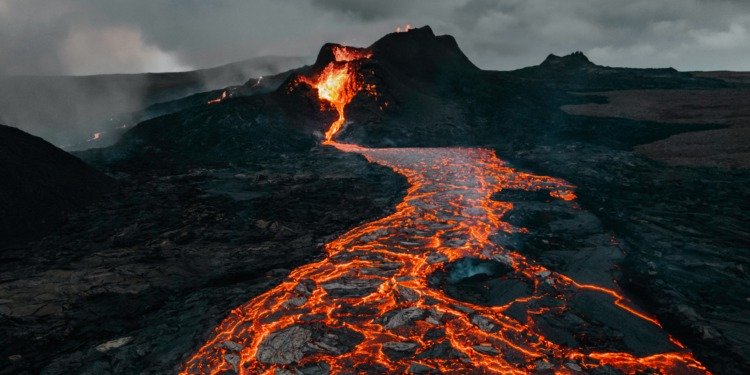In a dramatic display of nature’s raw power, an Iceland volcano has erupted near the capital, Reykjavik. The Reykjanes Peninsula’s eruption revealed the captivating yet unexpected aspect of Iceland’s volcanic landscape. As the region grapples with the aftermath of this geological event, experts and locals are monitoring the situation, ensuring the safety and well-being of all residents.
The Fiery Awakening
Litli Hrtur, the volcano, created a stunning spectacle as it spewed molten lava into the sky throughout the night. Iceland’s recent eruption, though not as big as previous ones, still shows the country’s geological changes.
The Iceland volcano eruption happened in a relatively uninhabited area, reducing immediate risks to human life. Following the volcanic eruption, authorities acted promptly to ensure the safety of the residents and tourists in the area. This involved closing off nearby roads and issuing evacuation orders for those closest to the site of the eruption.
According to the Icelandic Meteorological Office (IMO), a “minor” volcanic eruption started on Monday in Reykjanes Peninsula, Iceland. However, there has been no ash emission, and as of now, Keflavik Airport has not reported any disruptions.
RELATED ARTICLES: Peru declares ‘environmental emergency’ as oil spill wreaks havoc on the Pacific | Iceland Innovation Week: A ‘Festival’ of Startups, Creativity and Climate Action | Melting Sea Ice May Mean the End of Driftwood in Iceland | Iceland Introduces World’s Largest Carbon Capture Machine |
Scientific Curiosity and Research
Scientists are studying the Litli Hrtur eruption in Iceland to learn more about the country’s volcanic activity. Advanced technology is being used to monitor and record the behaviour of the eruption, analyse the composition of the lava, and measure the emission of gases.
Iceland’s Volcanic Landscape
Iceland is famously called the “Land of Fire and Ice” because of its breathtaking scenery that blends large glaciers with many active volcanoes. This geological wonder is due to the country’s position on the Mid-Atlantic Ridge, where the tectonic plates of North America and Eurasia converge. Iceland’s fiery nature has shaped its unique environment, providing a constant reminder of the Earth’s powerful forces at work.
Hiked 22 km last night to see the new volcanic eruption here in #Iceland 🌋🧡
Music: Hafursey (Yfir) by Ólafur Arnalds#volcano #Iceland #Reykjanes #eruption #eldgos #volcaniceruption pic.twitter.com/TailEoKMyF
— Cindy Rún (@cindyrunli) July 11, 2023
Tourism and Natural Wonders
Iceland’s breathtaking natural wonders, including volcanoes, geysers, and thermal springs, are still drawing tourists despite the challenges presented by volcanic eruptions. The eruption of Litli Hrtur caused temporary closures and changes to travel plans, but the resilient spirit of the Icelandic people and the allure of their stunning landscapes remain steadfast. Visitors still have the unique opportunity to witness the dynamic beauty of nature up close.
The recent eruption near Iceland’s capital, Reykjavik, has once again thrust the country’s volcanic activity into the global spotlight. Living in a volcanic region comes with potential risks, as shown by the eruption of Litli Hrtur. However, this event also showcases the breathtaking beauty and scientific importance of such occurrences. Iceland’s natural wonders inspire a deep connection between humans and the Earth.
Editor’s Note: The opinions expressed here by the authors are their own, not those of Impakter.com. — In the Featured Photo: An Iceland Volcano eruption Featured Photo Credit: Unsplash.










